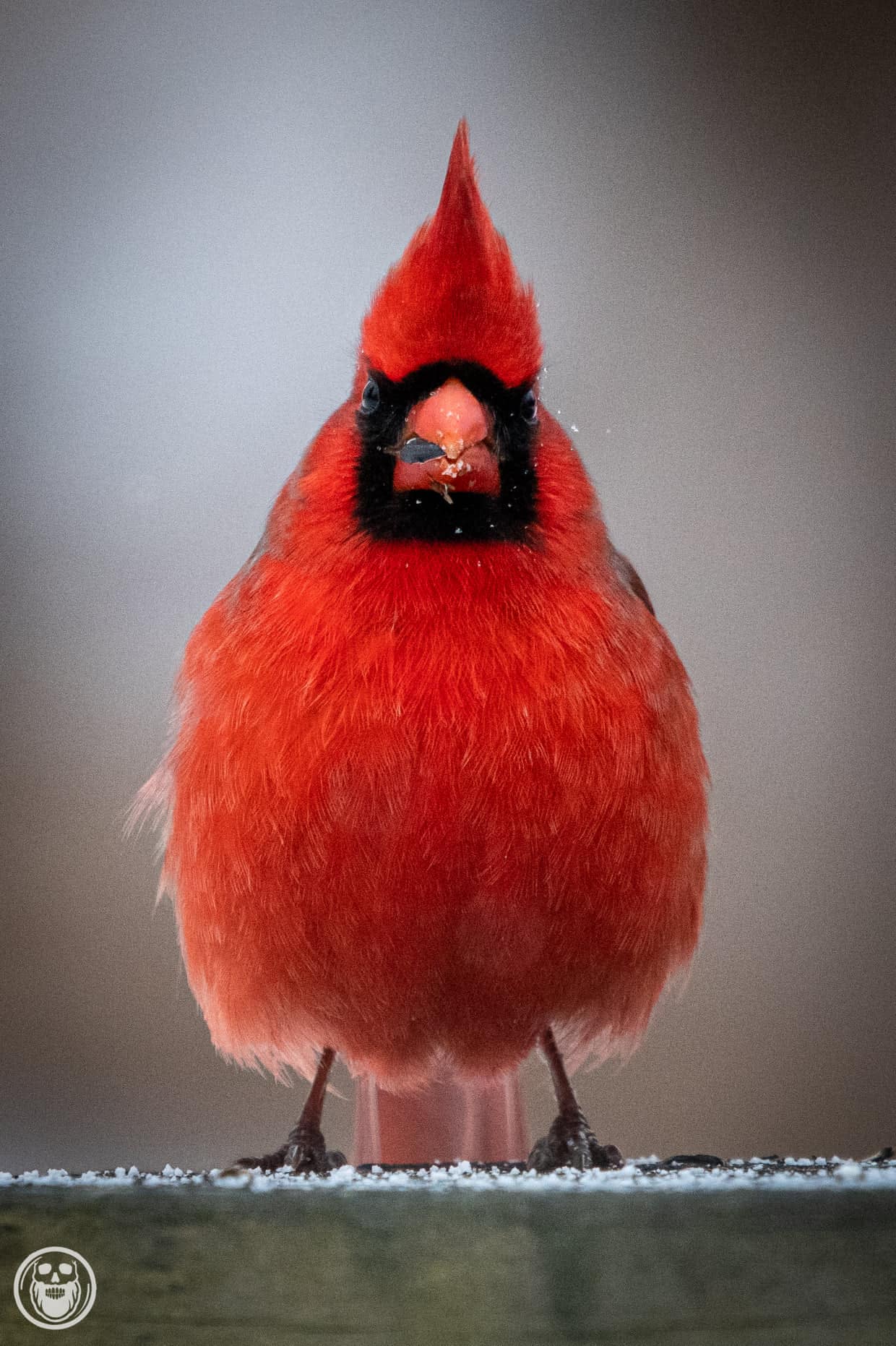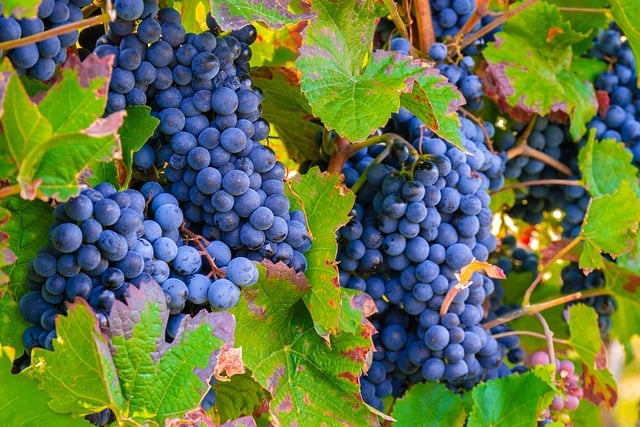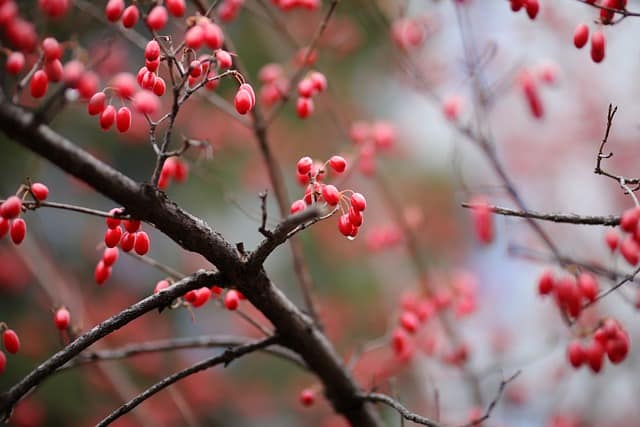Bright red cardinals are unmistakable in backyards across the country. But is it the male or female that sports that bright shade of red? And, have you have you ever wondered why they’re so red? Turns out, there is significance to the shade of red they sport and it’s kind of a big deal.
Before I get into all the red details, let’s address your burning question.
Is the bright red cardinal male or female?
The bright red cardinal is a male.
In this article, I’ll explain the science behind why male cardinals have their red coloring. I’ll also reveal the benefits male cardinals enjoy when their red is the brightest and most brilliant in the neighborhood.
I’ve attracted hundreds of cardinals in my yard over the past 26 years and still do a double-take when a male cardinal visits. I’ve often wondered about their bright red coloring but never acted on it. Until now.
I spent days reviewing scientific studies and reading my favorite bird book by Gary Ritchison (Wild Bird Guides: Northern Cardinals) cover-to-cover to get the answers to our burning questions. While I’m not normally a sciencey person, I totally nerded out on this topic and can’t wait to share it with you.
Throughout this article, I will reference the red color as either “bright” or “dull” as a way to identify the red quality I’m talking about. If you ask me, even the “dullest” of male northern cardinals is still a sight to behold!
Let’s learn more about the male cardinals in all their red glory …
Why do male cardinals have bright Red coloring?

From their crest to their tail, the male northern cardinal is almost completely red. The exceptions are their orange beak and black mask. So where does the red come from?
The male cardinal gets its red coloring from a combination of 3 elements:
- Diet
- Melanin
- Ketolase
Diet Contributes to the Cardinal’s Redness
Plants that are rich in carotenoid pigments provide the bird with a key element needed to produce their red plumage. Carotenoids can only be obtained from food – the bird cannot make it.
Carotenoids are available in many different types of foods – but especially those that are orange or red. As you might have guessed, sunflower seeds do not contain carotenoids.
The carotenoid-containing foods that northern cardinals are known to consume include wild grapes, dogwood berries, blackberries, and raspberries.
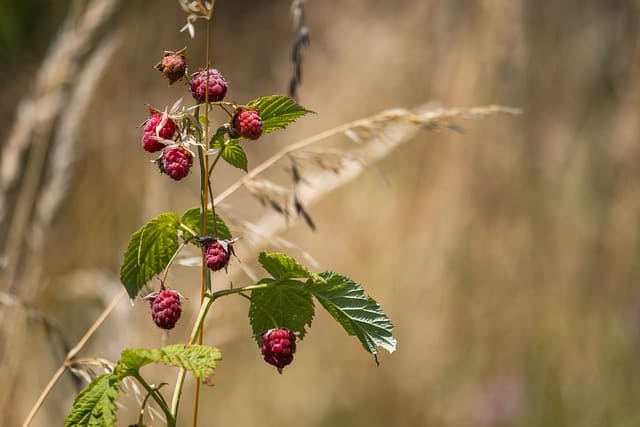
Melanin Contributes to the Cardinal’s Redness
Cardinals naturally produce melanin which enables them to deposit color into their feathers.
In rare instances, a cardinal may not produce melanin. This genetic mutation leads to albinism or leucism where the cardinal is fully or partially white.
Ketolase Contributes to the Male Cardinal’s Redness
Cardinals also naturally produce an enzyme called ketolase.
Without ketolase, the feathers would not be red at all. In fact, it would end up being a yellow cardinal. Yellow would appear anywhere the cardinal would normally have red. Since females have tinges of red, they can also be yellow. But again, yellow cardinals are very rare.
Diet, Melanin, and Ketolase Work Together to produce Red Plumage
Here’s how it works in very simplistic terms:
- A normal cardinal (melanin is present) consumes foods containing carotenoid pigments;
- Ketolase metabolizes the carotenoid pigments to red.
When the cardinal molts its old feathers each year they subsequently grow new feathers. It is during this particular time that scientists believe the bird’s diet (e.g. quality and quantity of carotenoids) determines how bright or dull their feathers will be.
A similar experimentation with male house finches proved this to be true.
Are Brighter Red Color Cardinals Healthier?
No. The bright or dullness of red the male cardinal displays does not correlate with its health. Their shade or red is determined by how much of their diet includes plants that contain the carotenoid pigment.
This was verified by a team of researchers from the Ohio State University who discovered the bird’s health/condition was not related to their color. The researchers said:
Even though urban birds consumed more sunflower seeds and other bird seeds, vs. carotenoid-rich foods, they sported duller red feathers but were healthier than their rural counterparts who sported a bright red plumage yet consumed a lot of honeysuckle, a food rich in carotenoids.
So, a bird’s health is determined by the quality of its diet and carotenoids are clearly part of its diet but not all of its diet. In fact, a diet of only carotenoids would be of very poor quality.
Like most wild bird species, cardinals require a diverse, varied diet of protein, fat, and carbohydrates to be healthy.
The benefits of being a Brighter Red Color
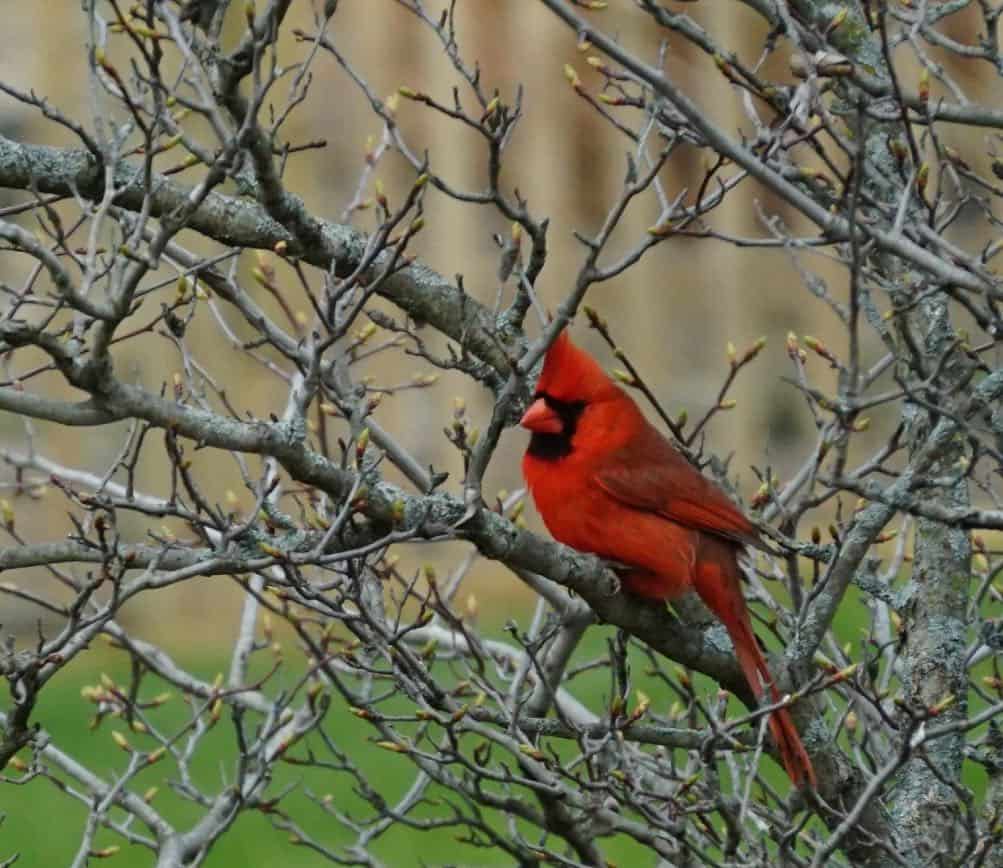
According to a study published in Behavioral Ecology, the brighter red male cardinals have at least two major benefits. They are:
- They’re able to secure better territories
- They’re able to attract better-quality females.
Brighter Red Male Cardinals Get Better Territories
Interacting with other male northern cardinal birds is a fact of life for a male northern cardinal. They have to establish a territory in which to attract a mate, nest, and raise their young. The prime territory has ideal foraging opportunities (more plants, insects, food, and water) as well as greater protection from predators (more dense shrubs).
Sometimes there are disputes with other male cardinals over territories. In the end, only one bird will win the northern cardinal territory, which leaves at least one loser. The study showed that brighter male cardinals were able to secure better territories than their duller counterparts.
Brighter Red Male Cardinals Attract More Female Cardinals
Researchers have known for a while now that female wild birds prefer males that sport attractive plumage – in this case, female northern cardinals prefer brighter red males.
The study from Behavioral Ecology further showed the females that selected the brighter males were “early breeding” females and in the end, the pair wound up having better reproductive success over the duller males (and presumably later breeding females).
What do female cardinals look like?
OK, we established the red cardinals are the males. So what do the females look like?
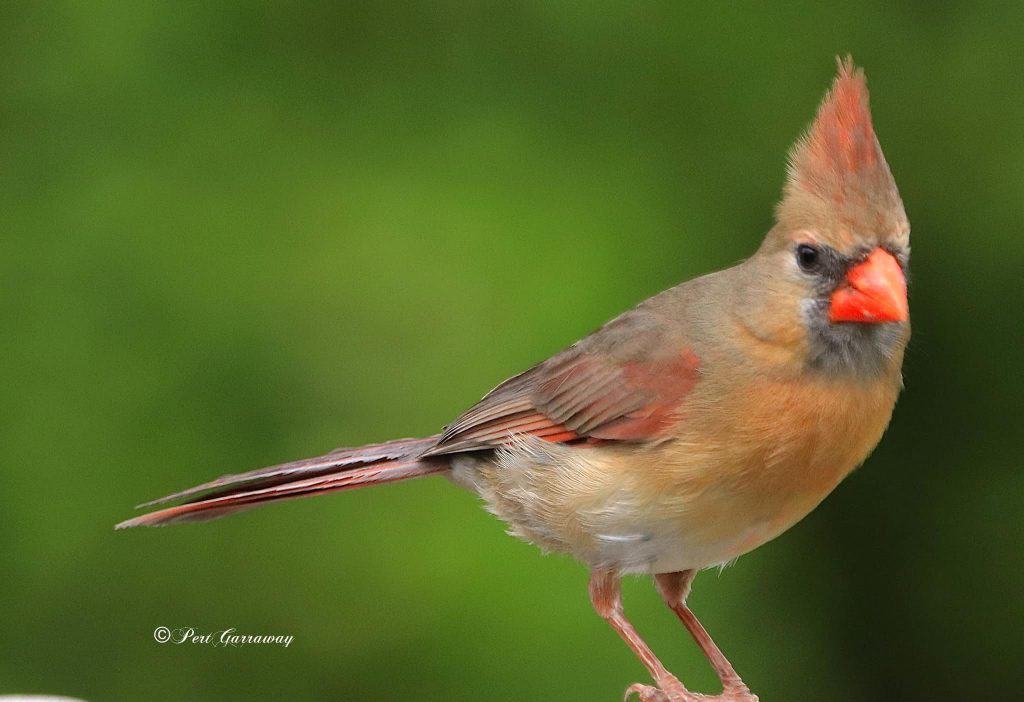
Female cardinals have a buffy-brown body with tinges of red throughout. The crest, wings, and tail have more concentrated areas of red. They have a charcoal mask and a bright orange beak.
Is there an advantage for a female cardinal to choose a bright Red colored male as her mate?
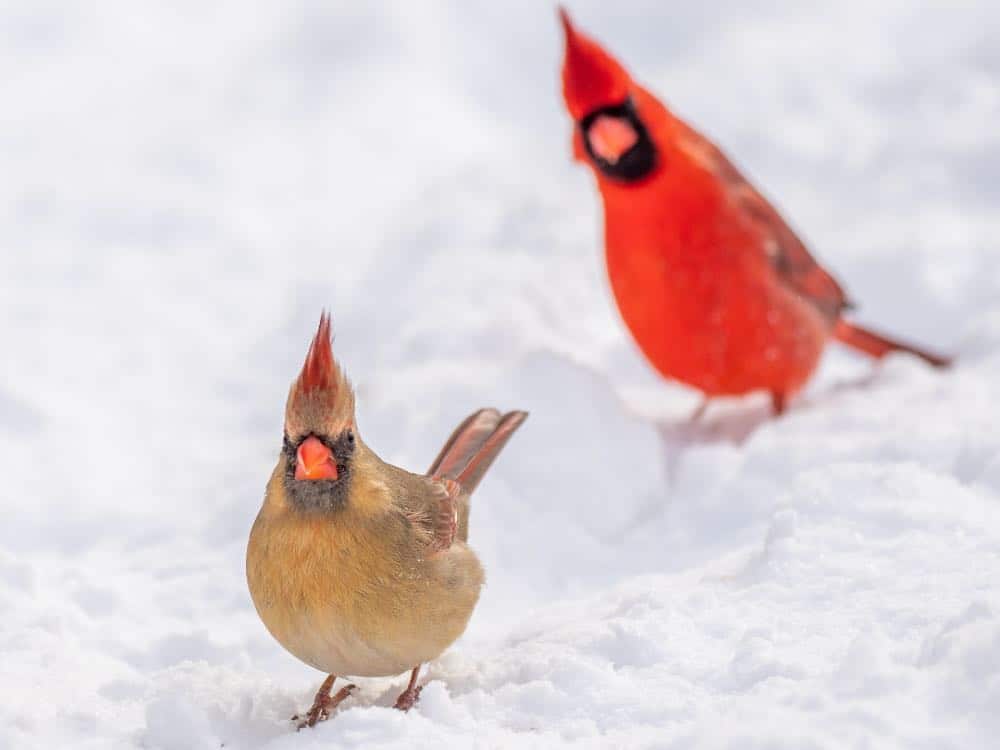
Yes. There are advantages for a female cardinal to choose a brighter red male cardinal.
Brighter red cardinal males produce more offspring in a breeding season, a fact revealed in Behavioral Ecology, so female cardinals that choose a bright red male have a crucial reproductive advantage.
This is likely due to a circle of events that starts with the brighter red male landing the best territory, then the early breeding female choosing the brighter red male, followed by the pair breeding earlier thus having a longer breeding season thus laying more eggs and raising more young who have the greatest chances of survival due to the high-quality territory.
This is especially important for northern cardinal species as they have a terrible survival rate. As non-migrators, northern winters can be brutal for cardinals.
Why are some male cardinal birds brighter red than others?
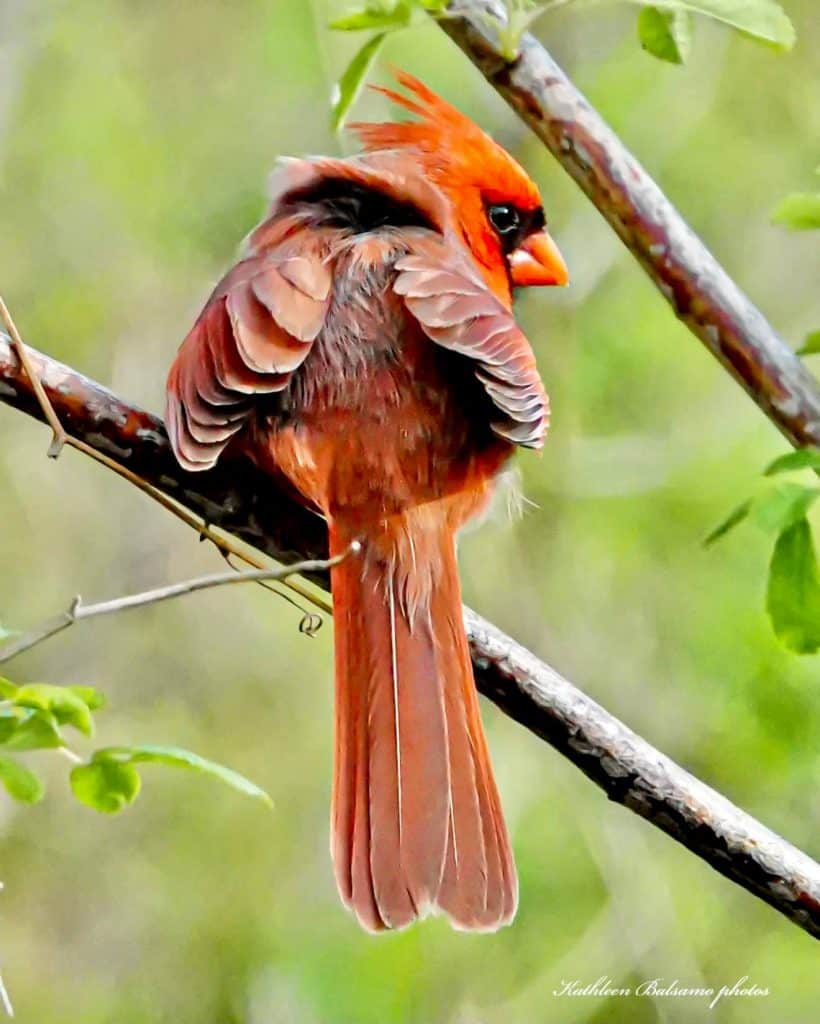
Some male cardinals are brighter red because they were consuming a lot of carotenoid-rich foods like wild grapes, dogwood berries, blackberries, and raspberries.
The more of these foods they consume, especially when molting old feathers and growing new, the brighter red their plumage will be.
On the flip side, with fewer carotenoid foods in their diet, the bird will have more pale, dull red feathers.
Does the Brightness of Male Cardinal’s Red color help it get food?
No. There is no evidence to suggest the bright vs dull red color of a male cardinal is correlated with the quantity or quality of food they find. It simply means the brighter red male cardinals likely had more carotenoid-containing plants available to them.
Do cardinals lose their color as they age?
No. There is no evidence to suggest male cardinals lose their red color as they get older. Their red color is determined strictly by their diet. The more carotenoid-rich foods they consume, the brighter red their plumage will be and vice versa.
Why would a red cardinal lose its red color?
Each fall, cardinals molt or lose their feathers, and grow new ones. During a season when the male cardinal has consumed fewer plants that contain the carotenoid pigment, their new fall feathers will be a duller red color.
Cardinals that are sick with “feather parasites” or some other disease can lose their feathers giving the appearance of a loss of red. If they recover the feathers will grow back.
Conclusion
Don’t Judge a Male Cardinal by His Color
Male cardinals with bright red feathers seem to have all the power. They are the most handsome among their peers, they get more lady cardinals, produce more babies, and are most admired by humans.
Of the 3 elements required for a male cardinal to be red, the bird only has control over one of them – their diet. The other 2 elements are created in their bodies and when combined with the right kind of foods there’s no limit to the brightness their red can become.
If he knew what was in store for him he would go out of his way to find wild grapes and a variety of berries.

